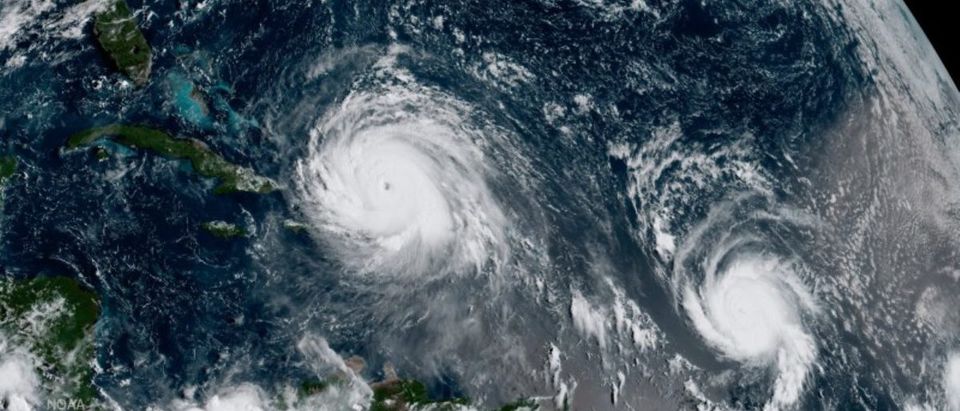A video put together claiming “extreme weather events” have quadrupled since 1970 is making its way around the internet again in the wake of two hurricanes and massive wildfires.
But did extreme weather events really quadruple? Or has technology and population growth allowed officials to respond to and observe more extreme events?
The Economist magazine has promoted its video on extreme weather, which has been gleefully retweeted by environmentalists who believe global warming is worsening the weather.
There are now 400 extreme weather events every year, four times as many as in 1970 pic.twitter.com/7X36sK2Ayr
— The Economist (@TheEconomist) September 12, 2017
The video is based on an Economist article, published on Aug. 29, declaring, “Weather-related disasters are increasing,” citing data from the United Nations and reinsurance industry.
“Since 1970, the number of disasters worldwide has more than quadrupled to around 400 a year,” the Economist reported, citing disaster data from the Centre for Research on the Epidemiology of Disaster (CRED). CRED is jointly funded by the UN and Belgian government.
The Economist also uses data from Munich Re that classifies disasters “causing at least one death or a set amount of monetary damage, shows an increase, too.” Munich Re says “there are six times more hydrological events now than in 1980. Last year’s total was the highest ever seen.”
It’s interesting the Economist was able to find a trend the hundreds of scientific experts working for the Intergovernmental Panel on Climate Change (IPCC) weren’t able to find in peer-reviewed data.
The IPCC’s latest assessment found “limited evidence of changes in extremes associated with other climate variables since the mid-20th century.”
That was largely ignored by environmentalists who gladly tweeted out the Economist’s video in the wake of two hurricanes making U.S. landfall since late August. The latest, Hurricane Irma, was one of the most powerful storms on record.
Those crazy radicals @TheEconomist insist that warming the world may cause a problem or two, or 400 actually. https://t.co/Nn4iMkOFVM
— Bill McKibben (@billmckibben) September 11, 2017
While both these datasets are comprehensive, each cataloguing thousands of natural disasters, they both suffer limitations that undercut the claim natural disasters are actually increasing.
For example, both datasets require natural disasters to meet certain qualifications to be counted. CRED listed the following criteria:
-
Ten (10) or more people reported killed
-
Hundred (100) or more people reported affected
-
Declaration of a state of emergency
-
Call for international assistance
As global population grows, more humans experience and report natural disasters that would have otherwise gone unreported. Technology has also enable more people to call for assistance with disasters than would have been possible in 1970.
It’s a similar story for Munich Re’s database, which even the Economist admits only counts events “causing at least one death or a set amount of monetary damage.”
Much Re’s latest annual report on global disasters admits the “trend of an increasing number of registered events worldwide has continued, which is primarily the result of improved reporting options.”
Follow Michael on Facebook and Twitter
All content created by the Daily Caller News Foundation, an independent and nonpartisan newswire service, is available without charge to any legitimate news publisher that can provide a large audience. All republished articles must include our logo, our reporter’s byline and their DCNF affiliation. For any questions about our guidelines or partnering with us, please contact licensing@dailycallernewsfoundation.org.


